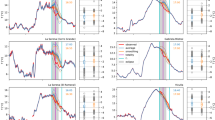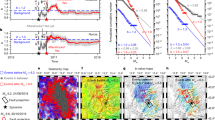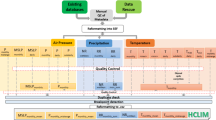Abstract
HAWKINS1,2 has suggested that the Aubrey holes at Stonehenge were used to count the years of a 56-year cycle, important in the motion of the Moon and the occurrence of eclipses. Hoyle3 and Colton and Martin4 have suggested other ways that Stonehenge could have been used to predict eclipses. Here we suggest a use of Stonehenge that has nothing to do with eclipses. We suggest also that the Aubrey holes, if they were used as counters at all, were used to count intervals of 56 months rather than 56 years.
This is a preview of subscription content, access via your institution
Access options
Subscribe to this journal
Receive 51 print issues and online access
$199.00 per year
only $3.90 per issue
Buy this article
- Purchase on Springer Link
- Instant access to full article PDF
Prices may be subject to local taxes which are calculated during checkout
Similar content being viewed by others
References
Hawkins, G. S., Nature, 200, 306 (1963).
Hawkins, G. S., Nature, 202, 1258 (1964).
Hoyle, Fred, Nature, 211, 454 (1966).
Colton, R., and Martin, R. L., Nature, 213, 476 (1967).
Atkinson, R. J. C., Stonehenge and Avebury (HM Stationery Office London, 1959).
Neugebauer, O., The Exact Sciences in Antiquity, 141 (Brown University Press, Providence, Rhode Island, 1957).
Author information
Authors and Affiliations
Rights and permissions
About this article
Cite this article
NEWTON, R., JENKINS, R. Possible Use of Stonehenge. Nature 239, 511–512 (1972). https://doi.org/10.1038/239511a0
Received:
Issue Date:
DOI: https://doi.org/10.1038/239511a0
This article is cited by
-
Stones, pits and Stonehenge
Nature (1981)
Comments
By submitting a comment you agree to abide by our Terms and Community Guidelines. If you find something abusive or that does not comply with our terms or guidelines please flag it as inappropriate.



